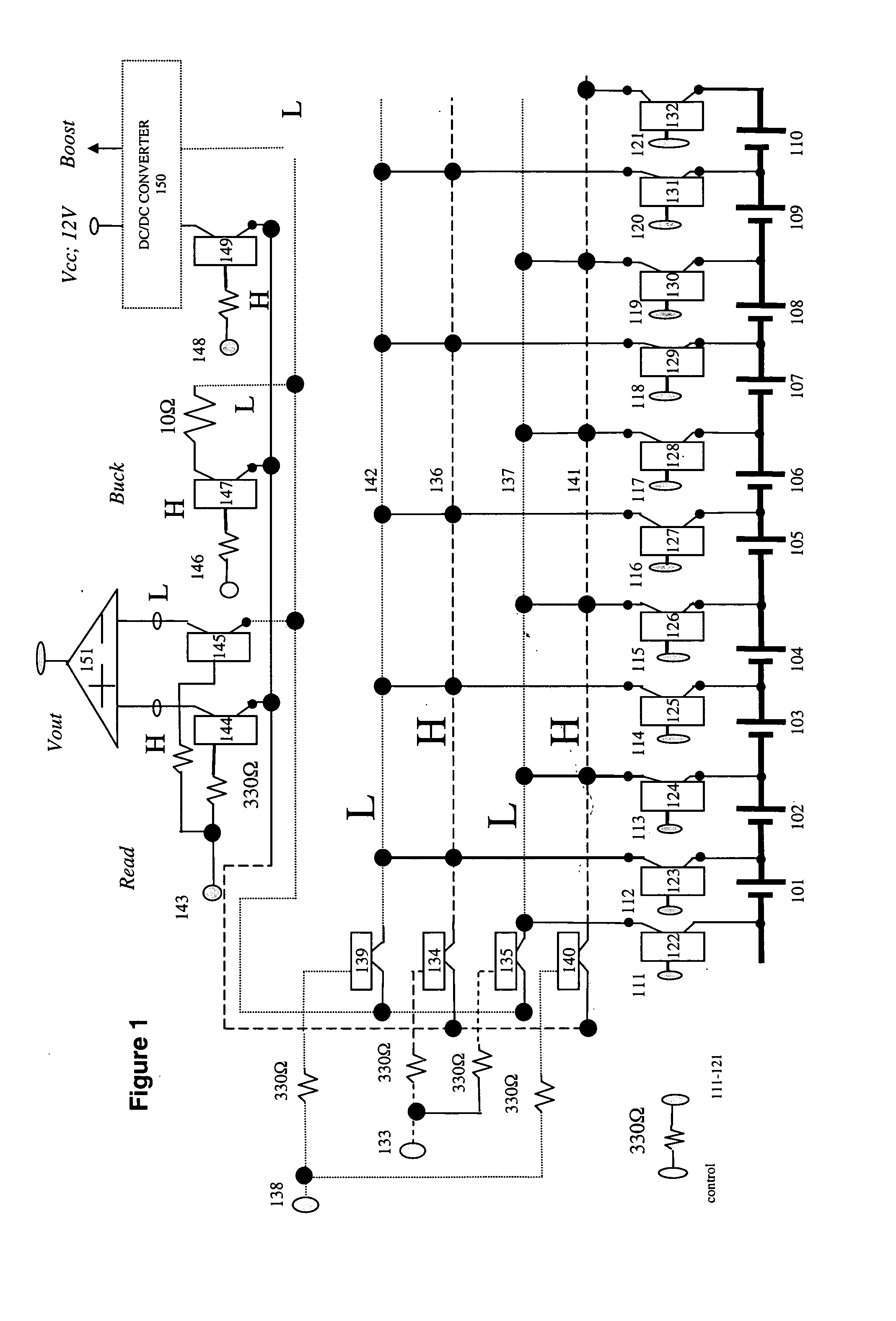Method and apparatus for multiple battery cell management
a battery cell and management method technology, applied in the field of multiple battery systems, can solve the problems of large mechanical relays, large bmss, and overcharged lithium batteries, and achieve the effect of efficient and safe battery cell charge management and more efficient bms scaling
- Summary
- Abstract
- Description
- Claims
- Application Information
AI Technical Summary
Benefits of technology
Problems solved by technology
Method used
Image
Examples
Embodiment Construction
[0018] The invention is a method and apparatus for multiple battery cell management. In the following description, numerous specific details are set forth to provide a more thorough description of embodiments of the invention. It is apparent, however, to one skilled in the art, that the invention may be practiced without these specific details. In other instances, well known features have not been described in detail so as not to obscure the invention.
[0019] Solid State Relays
[0020] In one embodiment of the present invention, a solid state relay (SSR) is used instead of a mechanical relay in a BMS. The SSR is smaller and faster than a mechanical relay, enabling smaller BMSs that more efficiently and safely manage battery cell charge. In one embodiment, the solid state relay is an optically isolated field-effect transistor (FET). In one embodiment, the input level for controlling the SSR is matched to the voltage level of the control circuit (e.g., 5V and 0V). In one embodiment, th...
PUM
 Login to View More
Login to View More Abstract
Description
Claims
Application Information
 Login to View More
Login to View More - R&D
- Intellectual Property
- Life Sciences
- Materials
- Tech Scout
- Unparalleled Data Quality
- Higher Quality Content
- 60% Fewer Hallucinations
Browse by: Latest US Patents, China's latest patents, Technical Efficacy Thesaurus, Application Domain, Technology Topic, Popular Technical Reports.
© 2025 PatSnap. All rights reserved.Legal|Privacy policy|Modern Slavery Act Transparency Statement|Sitemap|About US| Contact US: help@patsnap.com



